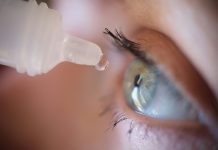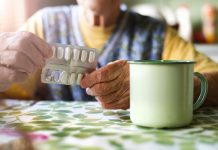
In a study from the University of Oxford, scientists found around 15% of people aged 40–75 may have a form of undiagnosed high blood pressure (hypertension) that occurs only at night-time.
Because they do not know about this, and therefore are not being treated for it, they are at a higher risk of stroke, heart failure, and even death.
When blood pressure is monitored over 24 hours, individuals can be divided into three groups according to their blood pressure pattern:
Dippers, for whom the night-time blood pressure is lower than the day-time blood pressure (which is the case for healthy young people).
Non-dippers for whom night-time and day-time blood pressure values are not very different.
Reverse dippers, for whom, contrary to expectations, the night-time blood pressure is higher than the day-time blood pressure, when they are up and active.
In the study, the team looked at 24-hour blood pressure patterns in patients admitted to the hospital and found that nearly half of these patients have a blood pressure rise at night (“reverse-dipper pattern”).
The researchers then looked at blood pressure patterns from patients in primary care from the same age group (40–75), who had been monitored for 24 hours during their normal daily activities.
The proportion of the population in this group who were “reverse-dippers” was around 15%.
There are several possible reasons for the difference in the proportion of people found to have a “reverse dipping” blood pressure pattern in the two patient groups.
One possible reason is that the community group included a much higher proportion of people who had already been diagnosed with hypertension, and these people are more likely to be “dippers” rather than “reverse dippers.”
This is because people whose blood pressure is highest in the day and drops at night are more likely to get picked up as having hypertension in GP surgeries and clinics.
The team says blood pressure follows a cyclical pattern over 24 hours. Normally, it goes down (or dips) at night during sleep and then rises after waking.
For ‘reverse dippers’ (mostly elderly people, sometimes with diabetes or kidney disease), the pattern is reversed: the blood pressure goes up (or reverse dips) at night, and then decreases after waking.
This means that reverse dippers have their lowest blood pressure during the day, and so they will be falsely reassured by day-time monitoring at home or in the GP clinic.
Day-time blood pressure measurements are not enough: It is vitally important to identify who is a reverse dipper through 24-hour ambulatory blood pressure monitoring.
If you care about blood pressure, please read studies about blood pressure drug that may increase risk of sudden cardiac arrest, and these teas could help reduce high blood pressure.
For more information about health, please see recent studies about nutrient that could strongly lower high blood pressure, and results showing this novel antioxidant may help reverse blood vessels aging by 20 years.
The study was conducted by Professor Lionel Tarassenko et al and published in the British Journal of General Practice.
Copyright © 2022 Knowridge Science Report. All rights reserved.



